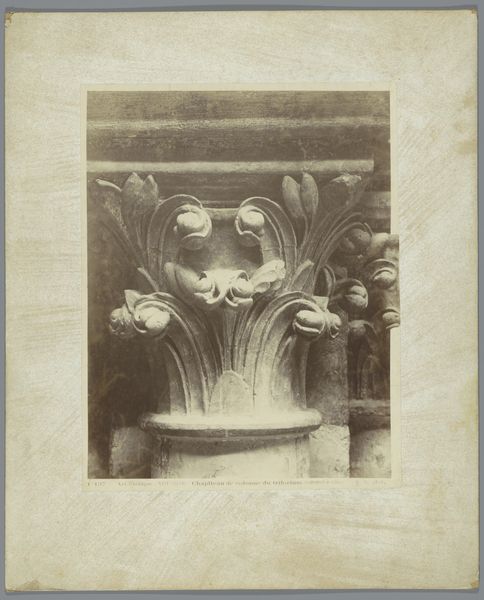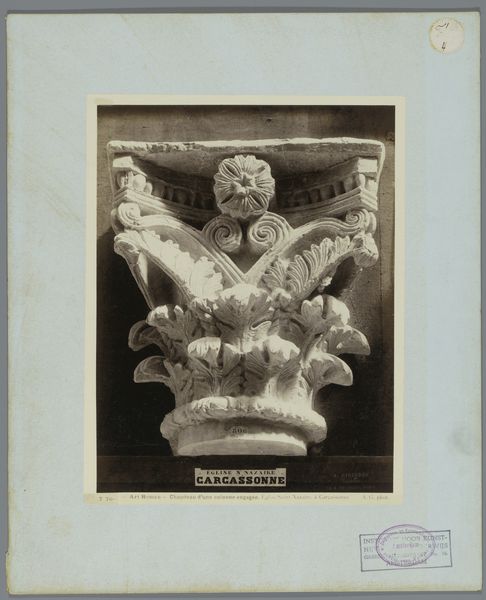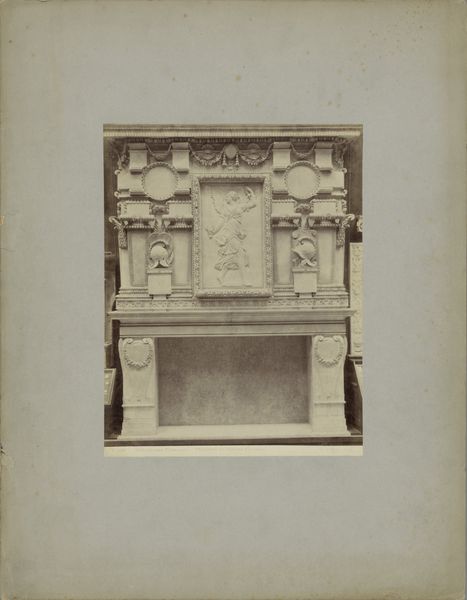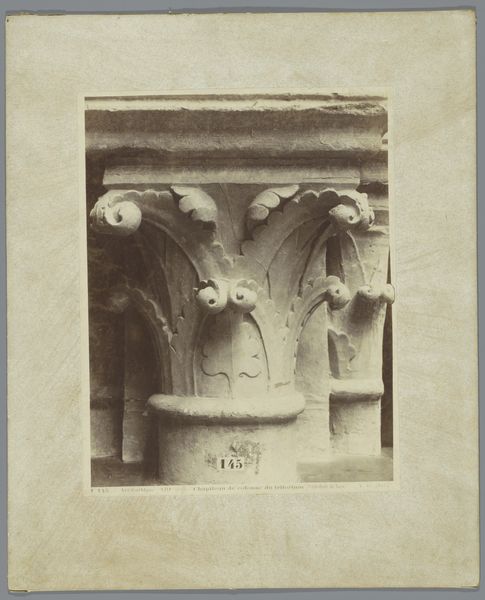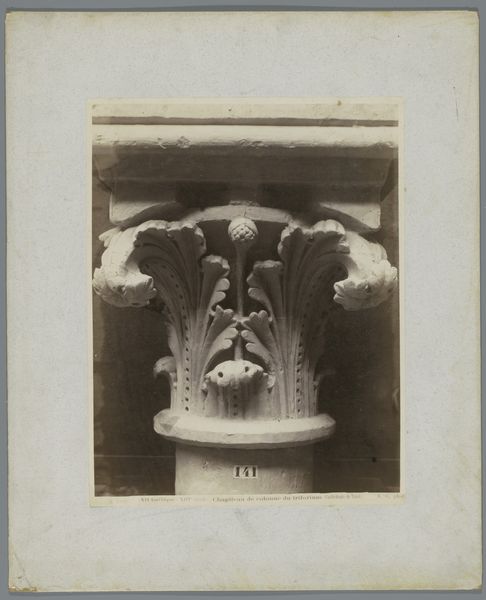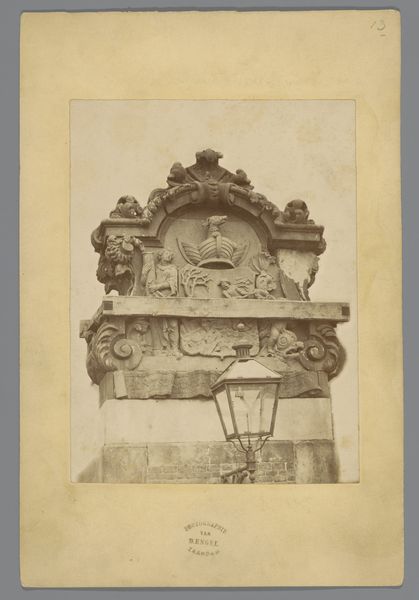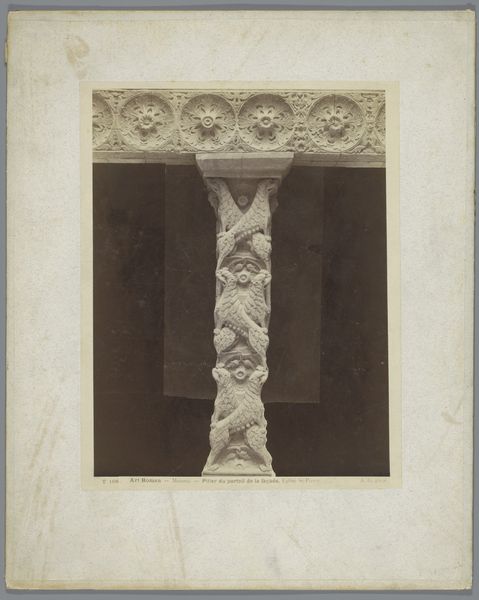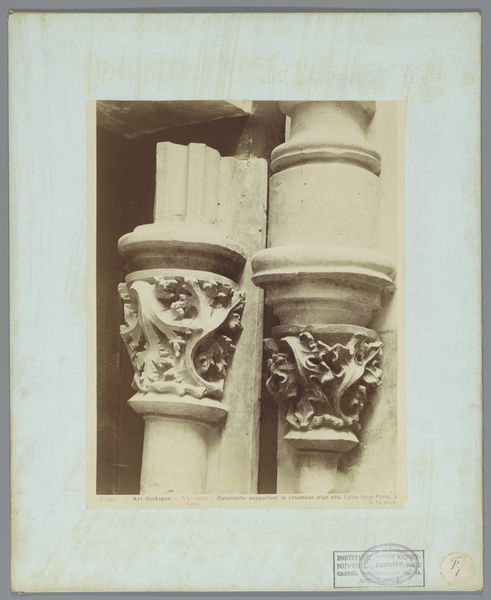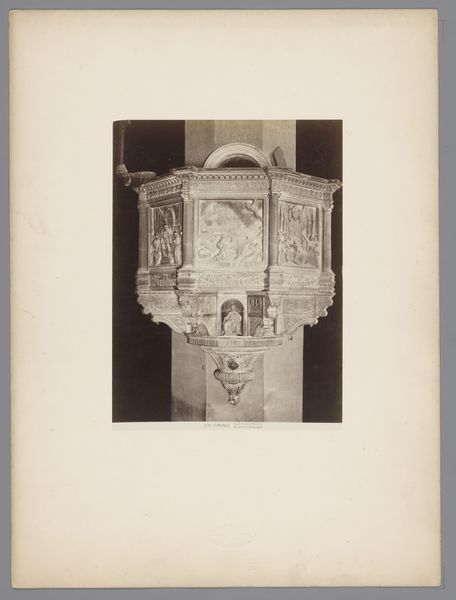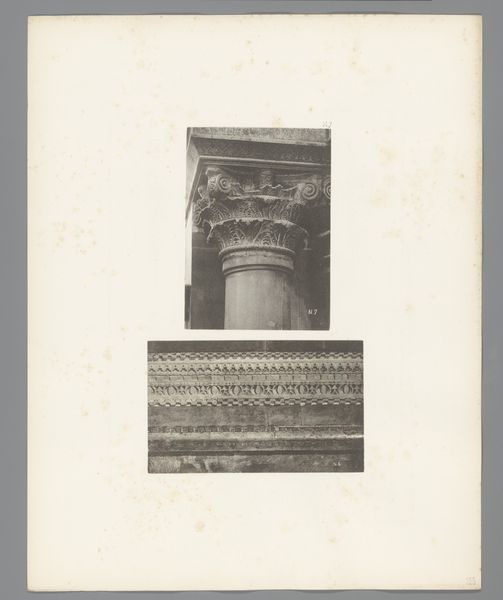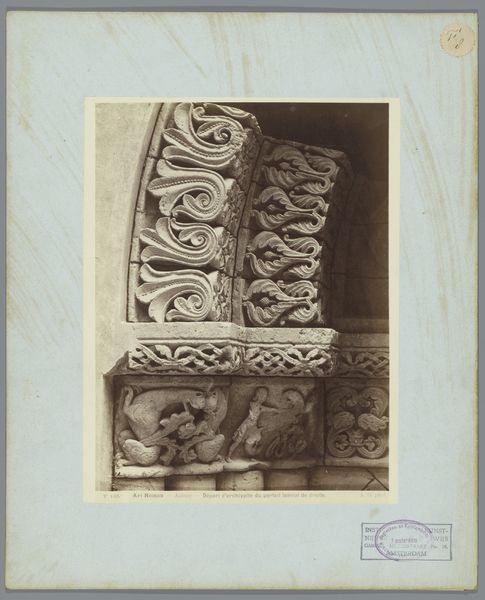
Open haard afkomstig uit Château d'Écouen gedecoreerd met helmen en een vrouw met een zwaard en een lauwerkrans c. 1875 - 1900
0:00
0:00
Dimensions: height 253 mm, width 196 mm
Copyright: Rijks Museum: Open Domain
Curator: Let's explore this intriguing photographic print attributed to Adolphe Giraudon, titled "Open haard afkomstig uit Château d'Écouen gedecoreerd met helmen en een vrouw met een zwaard en een lauwerkrans", dating roughly from 1875 to 1900. What are your first thoughts? Editor: My first thought is, texture! Look at how the photographic process captures the deeply carved details of this architectural fragment. It gives a sense of weight and the sheer physicality of the stone. You can almost feel the labor involved. Curator: Absolutely! And what strikes me is the array of symbolic references to valor and wisdom. The helmets speak of martial prowess, while the female figure crowned with laurel hints at intellectual and artistic achievement, echoing classical ideals. Editor: That’s an interesting reading, and indeed those motifs, helmets, wreaths…they are telling a very material story of acquisition, probably the result of colonial exploits, aren't they? Who would commission a fireplace with such motifs? How was it built? Where did the materials come from? Curator: That’s an excellent point. It prompts us to consider the patron's intent and how these classical allusions were employed, perhaps to legitimize or ennoble the owner's position within society. This chateau after all was a place where nobility would gather and flex their muscle, figuratively but also literally. Editor: It's also crucial to remember that photography itself, at this time, was still a fairly young medium. So the choice to document, specifically with photography, is saying something too. Was this part of an effort to record and preserve cultural heritage or to make it accessible to a broader audience? The print’s purpose deeply affects our interpretation. Curator: Precisely. Furthermore, one might also interpret the fireplace not only as a status symbol, but as a symbol of the domestic sphere now claiming the symbols that once dominated battlefields. What does this represent? Has war, expansionism and invasion become so deeply part of the home? Editor: Yes, framing the history of how materials were obtained also forces us to think of the social and economic networks and their implications back then, but also now. Thank you! This has truly deepened my perception. Curator: Indeed! Considering this piece’s historical setting adds depth to how we perceive the cultural and political climate reflected in the object.
Comments
No comments
Be the first to comment and join the conversation on the ultimate creative platform.
